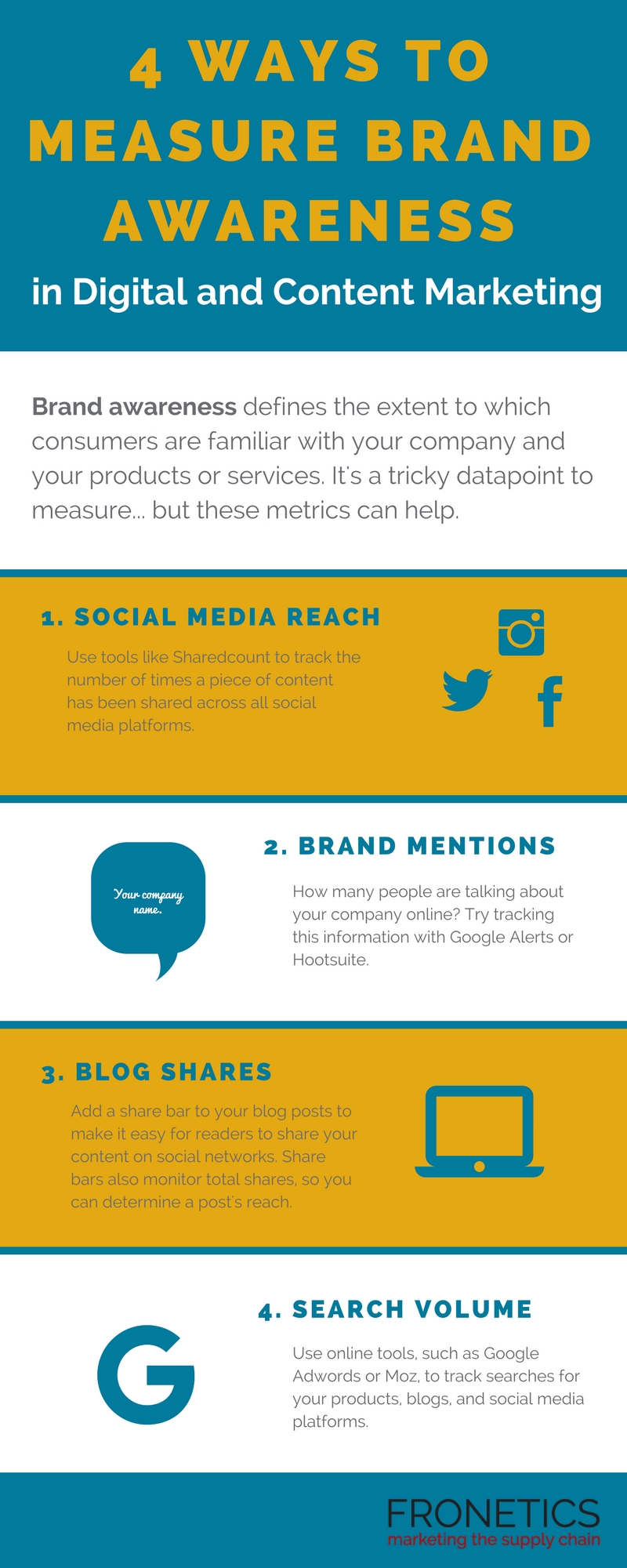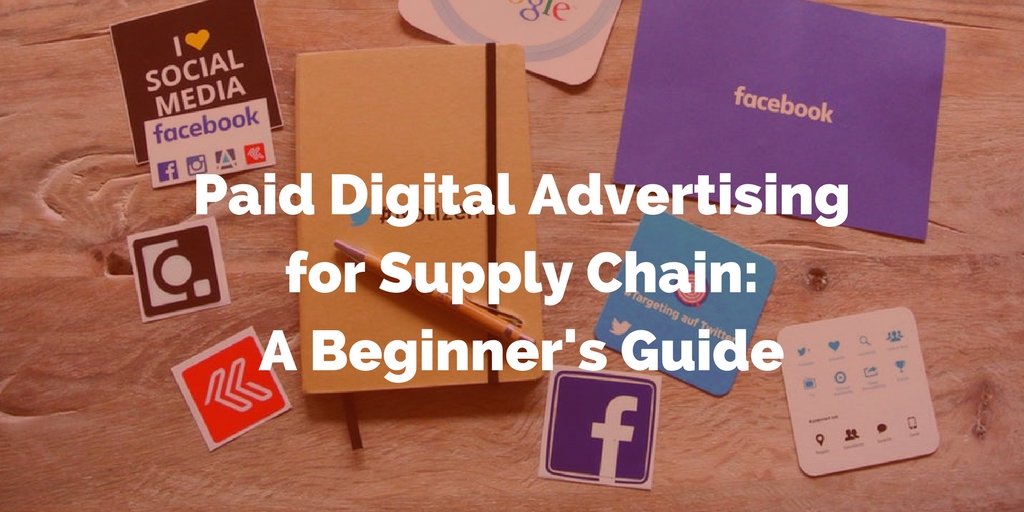
by Fronetics | Jan 29, 2019 | Blog, Content Marketing, Logistics, Marketing, Social Media, Supply Chain
Knowing the right video distribution channels can go a long way toward driving traffic and getting your content to your target audience.
Highlights:
- An effective video distribution strategy is key to success.
- Choose video distribution channels that match your marketing goals.
- Paid ads can give video an extra boost.
Video transcript:
I’m Christy Lemire, the Director of Video Marketing here at Fronetics. Today we’re going to be talking about the four best distribution platforms for video.
Here are the four best platforms for distributing your marketing videos.
1. Your network
Don’t underestimate the power of your own existing network. Send your videos, via email, to your primary contacts and everyone in your current database.
2. Social media
Platforms like Facebook, Instagram, Twitter, Snapchat, and of course YouTube are great to reach your target audience. Of course within the category of social media, you want to consider what platforms suit your content best. YouTube is a great place to start, but there are also many industry specific online forums and social groups that can benefit you as well.
3. Blogs
Promote your video on your own blog to reach your followers and boost your SEO. It’s also a good idea to distribute your video on other industry specific blogs to overlap your target audience.
4. Paid ads
While the first three channels of distribution we discussed are organic, sometimes it is well worth it to use paid ads to give your content a significant boost, such as Google Adwords and AdSense.
Bottom line is using the right distribution channels helps you get the most out of your video marketing efforts. For more information about video marketing, visit Fronetics.com.
Related posts:


by Fronetics | Jul 12, 2018 | Blog, Content Marketing, Logistics, Marketing, Supply Chain
Meta descriptions help boost your SEO, driving more traffic to your posts and more quality leads on your website.
You’re trying your best to become an expert in SEO optimization. You’re working hard to create valuable content, finding visually pleasing images to accompany your posts (and adding alt text), and using internal and external links throughout. But many of us marketers fail to acknowledge the importance of a strong, interesting meta description.
What is a meta description?
According to Wordstream, a meta description (sometimes called a meta description attribute or tag) is an HTML element that describes and summarizes the contents of your page for the benefit of users and search engines. Broken down into laymen’s terms, this means that meta descriptions are a short snippet of text that appears on a search engine results page (SERP) under your page title to describe to readers exactly what your content is about.
Why are meta descriptions important?
A strong meta description can draw visitors to your content. As they scroll through organic search results, your meta description is their first glance at what they can expect from your page, making it a very visible part of search marketing. A compelling meta description gives you a brief overview of what the content is about, as well as a convincing reason to click on the link to your page.
[bctt tweet=”As visitors scroll through organic search results, your meta description is their first glance at what they can expect from your page, making it a very visible part of search marketing. ” username=”Fronetics”]
Sounds pretty simple, right? Writing persuasive meta descriptions can actually be quite challenging.
The character-count limit, which depends on your content management platform, keeps your descriptions to not much longer than a tweet. It’s a lot of pressure for marketers to come up with short but captivating snippets as to why a reader should click on your page. Hence why most marketers tend to glance over this key factor in SEO optimization.
Here are five tips to help you start writing better meta descriptions and increasing your click-through rates quickly.
5 tips for writing better meta descriptions
1. Keep it to 155 characters.
According to Moz’s research team, the optimal character length for meta descriptions is 150-160 characters. Anything longer and most search engines will cut off your description.

As you can see above, longer descriptions that get cut off don’t give readers a full picture of what your page is about. It’s important to keep to the optimal character count, giving readers a clear understanding of why they need to visit your page.
2. Read, read, and read again: no grammatical errors.
This seems pretty straight forward, but grammatical errors in a short description are bad. Really bad. Make sure you go back and read (and reread) your meta descriptions before you post them. And don’t be afraid to ask your coworkers to double check your work — sometimes it’s hard to see errors in your own writing. Your descriptions are a direct reflection of your content and therefore need to be flawless.
3. Don’t shy away from offers.
We’ve all seen a meta description that adds “30-day trail free” at the end. And why not? Essentially, a meta description is a hook for visitors to click on your page. Incentives are a great way to help your page stand out from the competition. Including short call-to-actions or offers in your description lets visitors know what’s waiting for them when they visit your site. It’s a great way to boost your content and get the most value from your meta descriptions.
4. Beware of Google AdWords.
Google AdWords is a form of paid advertising that prioritizes paid ads over organic search results. This is great if you’re paying for advertising. But if you’re like many marketers, you’re hoping to be at the top of the search results because you’re working hard to optimize your content. Because Google now posts the top four search results through AdWords, your content has to work harder to get to the top of the search results lists, making your meta descriptions more important than ever.
Focus on writing descriptions that provide value and invite readers to click on your site, other than trying to sell yourself. A more natural, inviting meta description will help you stand out against the paid ads also appearing in the search results.
5. Test and change.
As with all aspects of content marketing, your efforts should never be stagnant. It’s imperative that you track, test, and change your game plan according to how well — or, in some cases, how poorly — the efforts turn out.
This absolutely applies to your meta descriptions as well. Don’t be afraid to search your keywords and compare competitors’ meta descriptions against your own. Adapt what you’re doing to what is driving the best results. Do descriptions with offers gain more visits? Are your descriptions coming across as uninviting? Make adjustments along the way until you find what works best for you.
Have you given much thought to your meta descriptions? What tricks have you used?
Related posts:


by Fronetics | Mar 12, 2018 | Blog, Content Marketing, Logistics, Marketing, Social Media, Supply Chain
Here’s how to quantify the impact of content marketing on brand awareness, a notoriously difficult benefit to measure.
A successful content marketing strategy strengthens the relationship between brands and their target audiences. And brand awareness is a key component to any successful content marketing strategy. Ultimately, the more aware audiences are of your brand, the more likely they are to buy your products or services.
To properly measure the impact of your content marketing, you must start at the beginning, with the overall goals for your content marketing strategy. What kind of content are you creating? Why are you creating this content? How will this increase sales or grow your business?
A lot of our customers include increasing brand awareness among their content strategy goals. But this is a very difficult objective to quantify. How can you measure how familiar people are with your brand?
Here are four metrics we recommend for tracking the impact of content marketing on brand awareness.
4 metrics to measure the impact of content marketing on brand awareness.
1. Social media reach
Tracking the reach of your social media content is a good gauge of the impact it’s having on your brand awareness. Companies can waste a lot of time trying to track down information on various social media accounts; don’t fall into this trap.
Use tools, like Shared Count, that show how many times a piece of content has been shared on social media. Shared Count accurately tracks the social reach of your content on the most popular social media sites — including Facebook, Twitter and LinkedIn — to easily keep track of your social reach. In turn, you can discover the impact your social reach is having on your brand awareness.
2. Brand mentions
Not to state the obvious, but if people are talking about your brand online, it’s safe to assume they are aware of you. There’s a great deal of value in knowing what customers are saying about your company and your products/services. Monitoring brand mentions online can provide honest feedback and objective insight from current and potential customers.
There are several tools to help you track brand mentions online. Here at Fronetics, we prefer the ease of Google Alerts, which allows you to set up custom alerts when your brand is mentioned online. We also use Hootsuite, where you can track brand mentions, as well as keywords and phrases, across all of your social media platforms.
3. Media mentions
Media mentions differ from brand mentions in their origin. Media mentions come directly from publishers, instead of customers. These mentions include any media coverage — TV, print, social media, interviews — that include your brand. Remember, if publishers are talking about your brand online as a result of the content you’re creating, it’s impacting your brand awareness.
And let’s not forget about linkless mentions. As Google and other search engines continue to update their algorithms, it’s crucial to update your monitoring practices. Linkless backlinks are becoming increasingly popular and can have a huge impact on your brand awareness (and SEO!).
4. Branded searches
Knowing how many people are searching for your specific brand tells you a lot about how well known your brand is. Using online tools, such as Google Adwords or Moz, you can track the searches for your products, blogs, social media platforms, and any other variation that you find useful. These tools are free, easy to use, and perfect for determining if your company is popping up when customers are searching.
Using these tools to measure brand awareness offers clues that customers are finding your company in their search efforts. If the needle is not moving in a positive direction, always adjust your strategy to until you find what works for your business.
Drawing the public’s attention to — and heightening their knowledge of — your business ultimately generates leads. And some of those leads will turn into sales. But, let’s be honest: this doesn’t happen overnight. And it’s often difficult to quantify.
That’s not a reason to throw in the towel. There are ways to measure the work that you’re putting into your content marketing program. Using these metrics, you can start tracking the impact of content marketing on brand awareness.
Related posts:


by Fronetics | Mar 1, 2018 | Blog, Content Marketing, Logistics, Marketing, Strategy, Supply Chain
Brand awareness is key in optimizing your content marketing efforts but can be challenging to quantify. Here are four metrics to help you measure brand awareness.
Brand awareness is the extent to which potential customers recognize a brand and associate it with specific products and services. Making the public aware of your company is a long-term goal of content marketing. Through social media, blogs, and other platforms, content marketing works to create brand awareness and strengthen trust with target customers. Drawing the public’s attention to — and heightening their knowledge of — your business ultimately generates leads that turn into sales, after all, which is the end marketing objective.
But it has been notoriously difficult to quantify how effective your content marketing strategy is (and, more specifically, how far your brand awareness reaches). Unlike vanity metrics, which are easy to quantify, measuring brand awareness takes more than just a simple calculation. But that doesn’t mean you shouldn’t take the time to measure brand awareness.
Understanding the value of brand awareness gives companies insight into how well their content marketing strategy is working to generate leads and drive sales. As marketing ROI guru Jim Lenskold writes:
“The value of brand awareness is the equivalent of half of a $100 bill. Unless you know where to find the other half, there really is no value. Brand awareness does not have a financial value on its own but is part of the collective effort necessary for marketing to drive incremental sales.”
Brand awareness is key to reaching and influencing potential customers. Here are some metrics to help your measure your brand awareness.
4 ways to measure brand awareness

(Made with Canva)
Ultimately, the more aware audiences are about your brand, the more likely they are to buy your products or services. From familiarity grows trust, which only helps to strengthen your brand and create new relationships with potential customers.
Taking the time to measure brand awareness will help to maximize the success of your content marketing strategy and increase leads. These four metrics will give you a good indication of how familiar your target audiences are becoming with your company.
Related posts:


by Fronetics | Oct 4, 2017 | Blog, Content Marketing, Marketing, Social Media
Here’s a rundown of paid digital advertising options, including display ads, AdWords, and sponsored social media posts.
We are strong believers in content marketing. Build it, and they will come — or, in content marketing speak, publish quality content, and customers will come to you. But, as I often write about, content marketing takes time to bear fruit. There’s not much you can do about that.lick
Except paid digital advertising.
By investing in paid digital advertising, you can boost the reach of your posts, display ads and videos. Pair quality content with a comprehensive digital advertising strategy, and you will be in a position to drive more traffic, create more brand visibility, and close more deals.
Your peers understand this. Within the first quarter of 2017, Facebook, Instagram, Twitter, LinkedIn, Snapchat, and Pinterest saw a 61.5% increase in paid media spend. And that’s only going to increase through 2018.
So where do you start? Here are four ways to get started in using paid digital advertising to help take your content marketing strategy to the next level.
3 paid digital advertising platforms for beginners
Display ads
Display ads are the paid advertisements that appear in front of users on website pages in the form of graphics. Unlike text-based ads, display advertising relies on elements such as images, audio and video to communicate an advertising message. Display ads are commonly referred to as banner ads, but they don’t always take exact banner form. They can come in all shapes and sizes and can appear anywhere on a webpage.
Benefits: Because digital ads are visual, they can be customized with your logo, message, or even an offer to help increase brand awareness. You have the ability to use graphics, video, audio, and your company’s branding to really stand out and attract their attention. Display ads also allow users the ability to target a specific audience. You control which sites they appear on, which geographic area they appear in, and which demographic or niche market they appear to.
Sponsored social media posts
Social media is a natural place to begin if you’re looking to get into paid digital advertising. A good starting point is Facebook. The social media giant’s social ad revenue was more than $9.16 billion in Q2 2017 alone. And it doesn’t stop there. Twitter brought in $548 million in social media advertising revenue in the same period, and Snapchat is expected to reach over $895.5 million in ad revenue in 2017.
Benefits: Running paid social ads allows you to reach a large audience at a low cost. You pay based on the type of ad you’re running. For example if you’re looking to drive brand awareness, you’ll incur a CPM (Cost Per 1,000 Impressions). And not only are the ads relatively inexpensive to run, they’re not expensive to create. You get all of this plus the ability to target your specific audience, reaching people that are interested in learning about what you do.
Google AdWords
Google AdWords places your website as one of the top results on a search engine results page (SERP) when a user searches for certain keywords of your choice. When a user clicks the AdWords link or calls your business using that link, you incur a charge. Otherwise, impressions are free.
Google’s most recent update involves changes to the so-called “3-pack,” or the listing of three related local businesses on a search results page. Many consumers rely on the 3-pack to discover businesses in their area that offer the products and services they are seeking. And businesses get the benefit of many additional leads and customers when they appear in the 3-pack. This can be particularly significant for small businesses.
Benefits: The biggest benefit of Google AdWords is its speed. You appear in a top spot in a user’s search results, meaning you are one of the first things a user sees when searching for a specific product or service. That’s another good point: Google AdWords allows you to focus on people who are searching for what you have to offer, so you don’t pay for a bunch of wasted impressions. AdWords also gives you real-time reports to track your ad’s success. A dashboard shows information related to each campaign, such as the ads clicked, keywords entered by website visitors, cost of clicks and much more.
Related posts:










